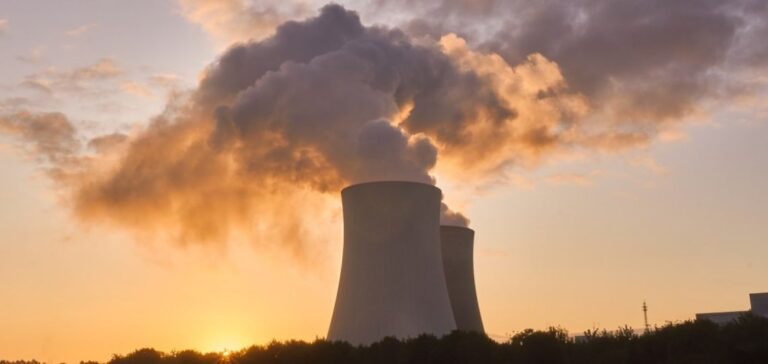France has gathered on Tuesday in Paris about fifteen representatives of pro-nuclear countries of the Old Continent, in order to establish “a roadmap” for the development of this energy, setting itself up as the European spearhead of the atom. It is a question of determining how “nuclear power will contribute to achieving our carbon neutrality objectives in the next 30 years,” the Minister of Energy Transition, Agnès Pannier-Runacher, told the press, while at the same time the National Assembly was due to vote definitively on Tuesday on the draft law on revival of nuclear power in France.
Fifteen countries were invited to the Ministry: Belgium, Bulgaria, Croatia, Czech Republic, Estonia, Finland, Hungary, Netherlands, Poland, Romania, Slovenia, Sweden, Slovakia, as well as Italy (“observer country”) and the United Kingdom as a “special guest” to share its experience. “This meeting showed that we could, if we put all the projects together, (…) reach a potential of 150 gigawatts (GW) of nuclear power deployed in 2050,” compared to 100 GW today, Pannier-Runacher said.
This figure is the result of “the addition of various projects” and “the projection of what would represent the simple maintenance of the share of nuclear power in the European electricity mix (25%),” said the minister. According to the company, this will lead to “450,000 additional recruitments in Europe”. The NGO Greenpeace, some of whose activists demonstrated in front of the ministry, denounced a “climate diversion”, believing that, given the time needed to build reactors, nuclear power would be “out of time to respond to the climate and energy crisis”.
“Nuclear power is too slow to build and vulnerable to the impacts of climate disruption,” she insisted. “While the next few years will be crucial to put Europe on the right climate trajectory, none of the new EPRs announced by the French government will be ready before at least 15 years,” according to the NGO.
The meeting of the nuclear alliance comes as the EU-27 begins negotiations on a bill to encourage the development of green technologies in the EU, in response to the US Inflation Reduction Act (a massive green subsidy plan).
Weigh in
Proposed in mid-March by the European Commission, this draft “regulation for a zero-emission industry” of greenhouse gases proposes numerous regulatory reliefs, in addition to a simplification of state aid. It cites nuclear power as one of the ways to decarbonize the economy, which is a political victory for France and pro-atomic EU countries.
However, in practice, this only concerns the fourth generation reactors, which do not yet exist and should reduce waste to almost zero, small modular reactors, also under development, and future fuels. A restricted perimeter likely to satisfy the anti-nuclear camp led by Germany.
Mrs. Pannier-Runacher expressed the hope on Tuesday that the exchanges between pro-nuclear energy “will help build a consensus within the European Energy Council to fully integrate nuclear energy into the Union’s energy strategy. This is the third meeting of this alliance, formed to defend nuclear power in the decarbonization of the economy.
For the first time, however, it did not meet in the margins of a European Energy Council but independently. In a joint statement, the participants in the meeting also stressed “the need to ensure that Europe continues to reduce its dependence on Russian imports”, especially with regard to nuclear fuel.
Including the United Kingdom, “on the nuclear sector, we are independent beyond 90%, there is no other energy on which we have this level of independence,” said Ms. Pannier-Runacher. With regard to the countries that have Russian technology power plants on their soil, the Minister estimated that it would take “about ten years” to get out of dependence on Russian fuel.





















